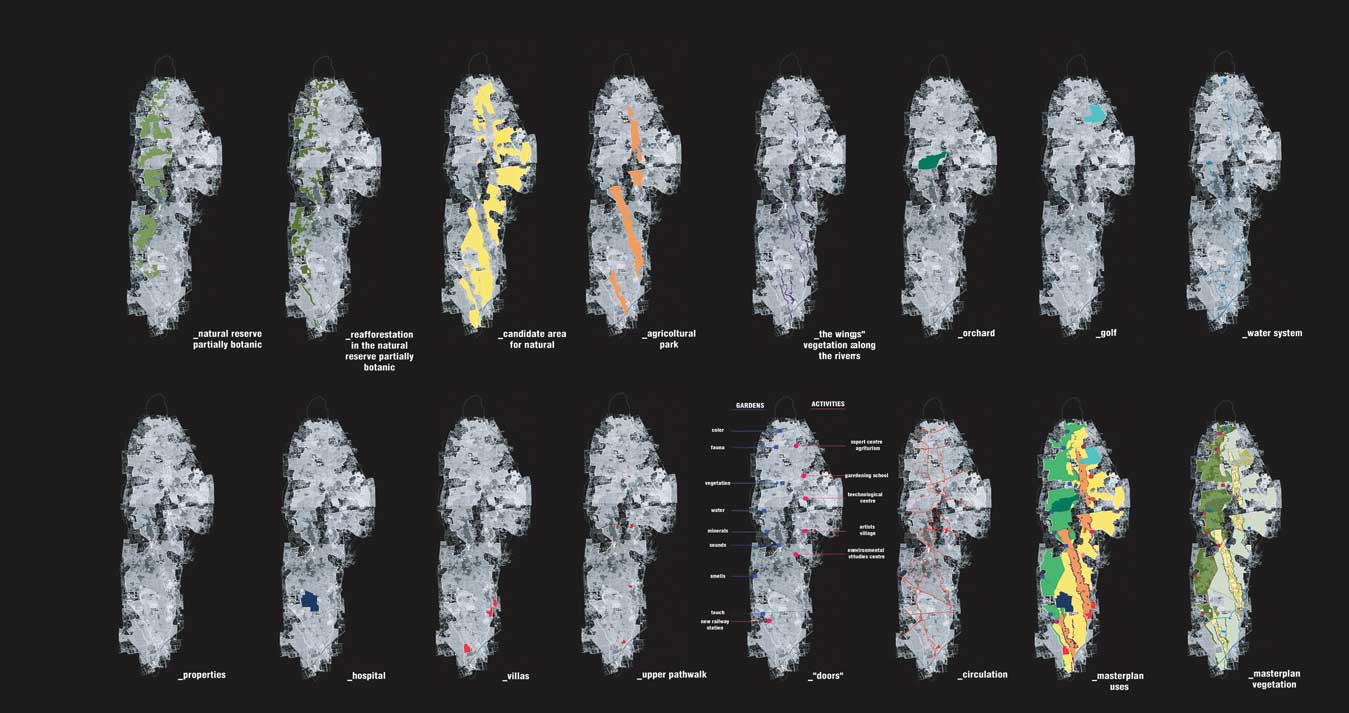Groane’s Park, Milan_Italy
“[…] each limit is maybe just a cut within a continuously mobile whole.” M. Foucault
The Groane’s Park at first sight might appear as the left survived land resulting by the expansion of the sixteen villages around it and by the pressure of the North West urban sprawl of Milan. Even though from a legal point of view the limits of the park are settled and defined, the inconsistent nature of its limits, its size, the distribution of different activities at the boundaries of the park and in the park itself, the numerous roads crossing the area and the lack of a management plan contributed to the fragmentation of the area into many inconsistent enclaves, not connecting, not interrelating nor interacting with each other.
The identity of the park blurs into a chaotic puzzle of needs and realities where limits become just “arbitrary cuts within a continuously mobile whole”. The geological research revealed the deepest nature of park: a morphological terrace of clay with a difference in levels from the surroundings varying from 20 to 50 meters. The presence of a high number of ovens for the production of bricks distributed all over the territory is another confirmation of the ancient identity of the park.
The project aims to give back to the park a lost identity, redefining the limits between legal and historical reasons, reconfiguring the circulation in order to achieve a better accessibility and connectivity between the parts as well as to help and not confuse the understanding of the whole. Starting from the definition that the park receives its shape from the city to which it opposes and that its borders, as form of resistance and relationship, are dictated by a geo-anthropological stratification, the most logical consequence was to appoint the borders as the elements capable to communicate identity, as thresholds between different systems, gateways between inside and outside. Given the substantial size of the park and the nature of its edges, the strategy was to choose as gateways very specific points at the borders: the crossing roads throughout the site. Such Gateways represent interfaces, rooms, sort of imaginary facades to the park. They work as magnifying lenses for the different identities of the park and they give to it a global image according to different tunes. On the west side, where the limits defined by the natural reserve were stronger the gateways became gardens; on the east side where instead the sprawl was wilder they turned into services and facilities for the park.
- [location] Saronno (MI)_Italy
- [status] Completed in 2000
- [program] Urban Planning
- [size] 3445 hectares
- [client] Final thesis
- [architect] Ilaria Di Carlo
- [publications] Catalogue Venice Biennale 2002
Groane’s Park, Milan_Italy
“[…] each limit is maybe just a cut within a continuously mobile whole.” M. Foucault
The Groane’s Park at first sight might appear as the left survived land resulting by the expansion of the sixteen villages around it and by the pressure of the North West urban sprawl of Milan. Even though from a legal point of view the limits of the park are settled and defined, the inconsistent nature of its limits, its size, the distribution of different activities at the boundaries of the park and in the park itself, the numerous roads crossing the area and the lack of a management plan contributed to the fragmentation of the area into many inconsistent enclaves, not connecting, not interrelating nor interacting with each other.
The identity of the park blurs into a chaotic puzzle of needs and realities where limits become just “arbitrary cuts within a continuously mobile whole”. The geological research revealed the deepest nature of park: a morphological terrace of clay with a difference in levels from the surroundings varying from 20 to 50 meters. The presence of a high number of ovens for the production of bricks distributed all over the territory is another confirmation of the ancient identity of the park.
The project aims to give back to the park a lost identity, redefining the limits between legal and historical reasons, reconfiguring the circulation in order to achieve a better accessibility and connectivity between the parts as well as to help and not confuse the understanding of the whole. Starting from the definition that the park receives its shape from the city to which it opposes and that its borders, as form of resistance and relationship, are dictated by a geo-anthropological stratification, the most logical consequence was to appoint the borders as the elements capable to communicate identity, as thresholds between different systems, gateways between inside and outside. Given the substantial size of the park and the nature of its edges, the strategy was to choose as gateways very specific points at the borders: the crossing roads throughout the site. Such Gateways represent interfaces, rooms, sort of imaginary facades to the park. They work as magnifying lenses for the different identities of the park and they give to it a global image according to different tunes. On the west side, where the limits defined by the natural reserve were stronger the gateways became gardens; on the east side where instead the sprawl was wilder they turned into services and facilities for the park.





